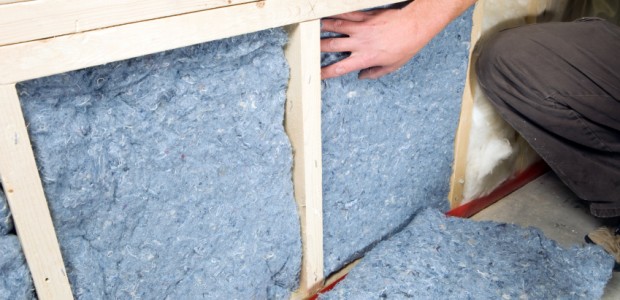When thinking about remodeling a great way to reduce your carbon footprint is by choosing green insulation. By choosing the correct insulation you can also reduce your energy cost. You don’t have to choose the traditional fiberglass insulation; there are many different environmentally friendly choices.
Here are the top 3 green insulation options:
Sheep’s Wool
When wool fibers are compressed, they form millions of tiny air pockets. These pockets trap air, which keeps the animals — and homes — warm in the winter and cool in the summer. Plus, wool is very breathable, which means it can absorb moisture from the air without affecting its capacity to retain heat. Specifically, the outer layer of wool fiber is resistant to water. However, the fiber’s inner layer loves water and can absorb about one-third of its weight in moisture without ever feeling damp. And when wool becomes moist, it generates heat, which in turn prevents condensation. If you insulate your home with wool, you don’t need to adjust your heating or cooling systems as often as you would with other materials and that saves money. Wool insulation keeps buildings cool in the day and warm at night, and it’s more fire resistant than other types of insulation.
Cotton
Cotton is a natural and renewable resource, which makes the plant one of the greenest insulation products on the planet. Cotton insulation is similar to fiberglass insulation in several ways. For one thing, it can be rolled into batts. Cotton insulation doesn’t contain formaldehyde which has been linked to some types of cancer. Cotton is very good at absorbing moisture, and when treated with boric acid, becomes flame retardant. However, one of the drawbacks of cotton insulation is that it costs about twice as much as fiberglass.
Icynene
Perhaps no home insulation seals your house as completely and as thoroughly as the spray-on foam insulation known as Icynene, which is made from castor oil. Once it hits the surface, Icynene expands nearly 100 times it volume. The puffy sponge cake-like substance creates a thick blanket of insulation that tightly seals air leaks. Not only does Icynene stop drafts, it also muffles noise. Icynene can reduce a home’s energy bill by 30 to 50 percent. Icynene works so well because it traps air in tiny bubbles during the foaming process. As the foam cures, the air remains in place. However a drawback of Icynene is that it’s expensive — about three times the cost of fiberglass.
